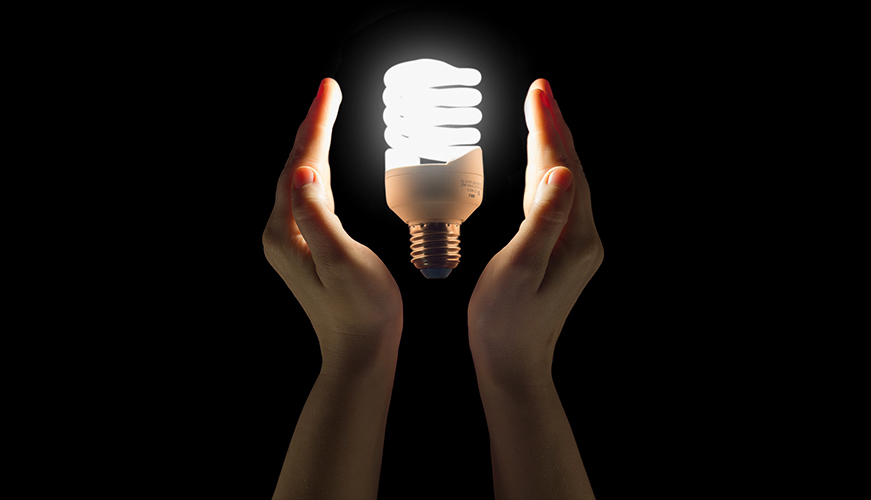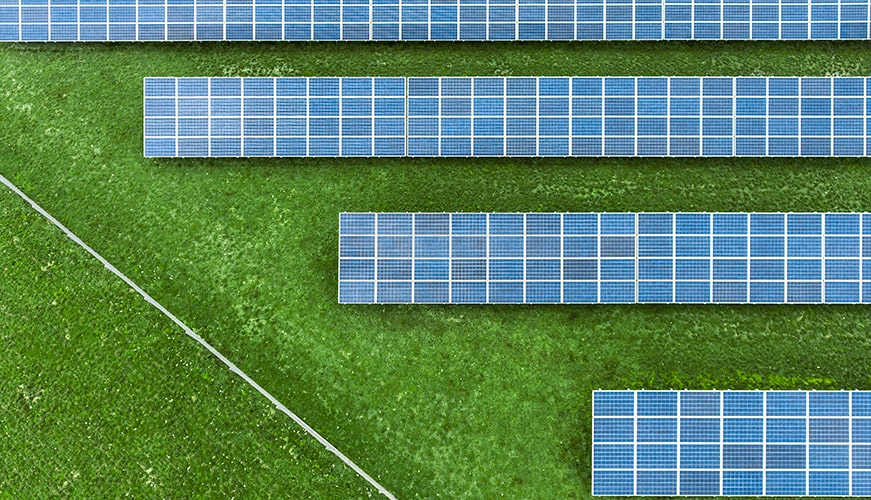Light bulb manufacturing has recently undergone an energy-saving revolution, phasing out energy-draining incandescent bulbs in favor of more efficient CFL, halogen, and LED bulbs. These bulbs use from 25 – 80% less energy than incandescent bulbs, and since the average home spends 25% of its energy on electric lighting, this has the potential to make a huge impact.
These three energy-efficient bulbs have unique qualities that can be useful in different situations to suit your needs. These qualities include the brightness, the color (does it give off warm or cool light?), whether it works well outdoors, how long it takes to reach full brightness, and whether it can be dimmed. Price and efficiency are also factors you should consider. If you want to make an informed decision, you can read about the benefits of each type of bulb below.
First, a little bit about the incandescent bulbs that are on their way out. This bulb is still the cheapest to buy up front, but its short lifespan and inefficient use of electricity make it more expensive in the long run. Incandescent bulbs only last about 1000 hours and convert less than 5% of the energy they use into light. This standard will be used as a measure of comparison for the bulbs listed below.
CFL bulbs (Compact Fluorescent):
- Use 75% less energy than standard incandescent bulbs
- Lifespan: 7-14 years (at 3 hours per day)
- Frequently turning on and off will shorten lifespan
- Slow to brighten (especially in cold temperatures)
- Not great at showing the accurate colors of objects
- Contain mercury that is released when broken, requiring the bulbs to be recycled
- Most do not work with dimmers, timers, and motion sensors
CFL bulbs are more expensive than incandescent bulbs, but the increased efficiency and lifespan means that you will save about $6 per year per bulb (and $60 over the course of the bulb’s lifetime) by choosing this option instead.
Halogen bulbs:
- Use 25% less energy than standard incandescent bulbs
- Lifespan: 1 – 2 years (at 3 hours per day)
- Brighten instantly
- Can be dimmed
- Accurately show colors of objects
- Produce white light (perfectly neutral, as opposed to warmer or cooler light)
Halogen bulbs are most like traditional incandescent bulbs in how their lighting process works. They convert a large amount of energy into heat and will be extremely hot to the touch. However, they are also more efficient, saving you about $7 per year for the few years that they last.
LED bulbs (Light Emitting Diodes):
- Use 80% less energy than standard incandescent bulbs
- Lifespan: 18 – 46 years (at 3 hours per day)
- Brighten instantly
- Many can be dimmed
- Many work with photocells and timers, some with motion sensors
- Some can’t cast light in all directions
- May be bigger/heavier than other bulbs
As the most efficient light bulb when it comes to converting energy into light, LED bulbs are cool to the touch because they convert minimal energy into heat. While they are the most expensive bulb, they are also the longest lasting and will end up saving you about $7 per year per bulb, paying for themselves many times over.
How to Choose Light Bulbs for Your Home
Now that you’ve been able to compare different types of energy-saving bulbs, how do you decide which ones are best for your home? A good place to start is understanding the terminology that light bulb manufacturers use on the packaging. Instead of watts, manufacturers are now using units called lumens, which is a different way of quantifying a light’s brightness.
Also important is the color temperature which is measured on the Kelvin scale.
Understanding temperature:
Light comes in all different colors, and most light bulbs we use in our homes range from warm to cool temperatures. Different temperatures of light may look better in different areas of your house. For instance, you may want warm lighting in a bedroom for a cozy, romantic feel. Or you may prefer cool lighting in areas where you do a lot of reading. White light is great for bathrooms because it won’t distort the colors of objects or makeup.
How do you know what color your light will be? Look for the Kelvin measurement on the bulb’s packaging, and use this guide to figure out the temperature:
- 2700 Kelvin: warm yellow
- 3000 Kelvin: white light
- 3500 – 4100 Kelvin: bright white
- 5000 – 6500 Kelvin: bluer white
Understanding brightness:
The unit that you’re probably used to – watts – doesn’t translate consistently between different types of bulbs when measuring brightness. A 45 watt incandescent bulb is much dimmer than a 45 watt LED bulb; a closer equivalent would actually be a 9 watt LED. The best way to measure brightness is with lumens, which measures the amount of light that a bulb emits rather than the energy it uses.
The brighter a bulb is, the more lumens it offers – no matter what type of bulb it is. If you’re wondering how to translate the watt measurement you’re used to into lumens, keep this in mind: a 100 watt incandescent bulb is roughly equal to 1600 lumens. If you’re replacing a 60 watt incandescent bulb, look for an energy-saving bulb with 800 lumens. And a 40 watt incandescent bulb will have the same brightness as a bulb with 450 lumens.
Tips for your home:
Here are a few extra bits of advice to keep in mind when buying lights for your home. These will help you save money and make the most of the unique benefits each type of bulb has to offer.
- If you’re looking to transition from incandescent to energy-saving bulbs, consider replacing your most frequently used bulbs first. This will ensure the greatest savings and also let you decide if you like the choice that you’ve made before you buy more.
- Use LED bulbs for light fixtures that you turn on and off frequently (like in bathrooms). LED lights will brighten instantly and won’t have their lifespan shortened by on/off cycles like CFL bulbs.
- Use LED bulbs in places where instantaneous light is a must, such as hallways and staircases.
- If you have lights outdoors, you can install a motion sensor or a photocell that turns lights on when it gets dark in order to save energy.
- Remember that CFL and LED bulbs are usually larger and heavier than incandescent ones. When you’re replacing an incandescent, bring it to the store with you to make sure the replacement isn’t too big.
- Avoid CFL bulbs in children’s rooms or other areas prone to roughhousing. These lights release dangerous mercury when broken.
We hope this article helps you make smart, informed decisions about your home’s lighting. Remember that when it comes to saving energy, knowledge is power!



